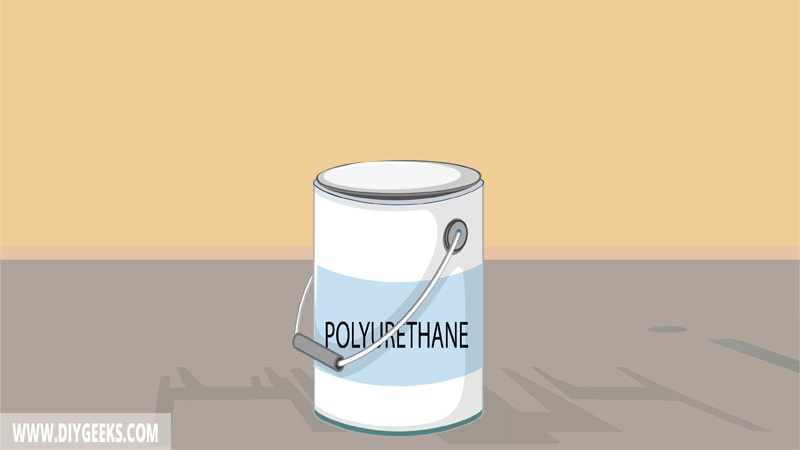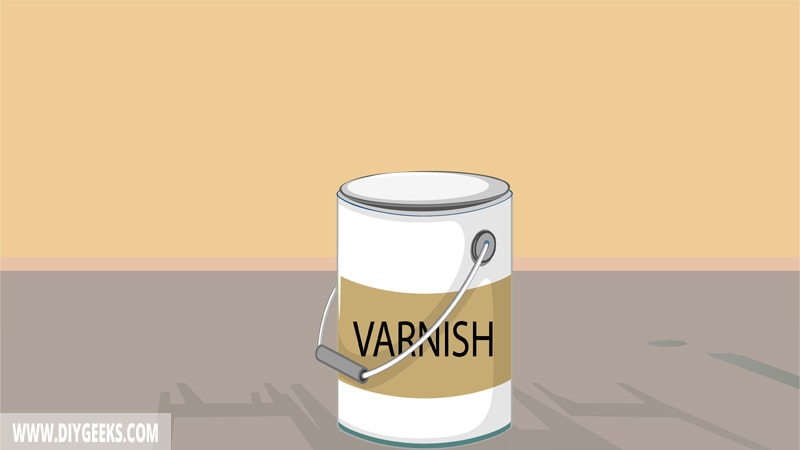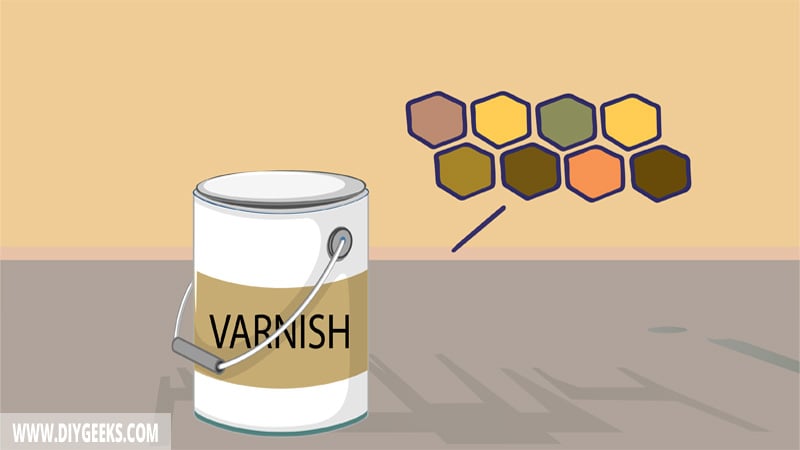Polyurethane is a plastic-like finish that protects surfaces from moisture, water, and weather elements. Varnish is a sealer that enhances the surface appearance and offers protection.
Polyurethane is more durable, cheaper, and easier to clean, maintain, and apply than varnish. Varnish has a more traditional formula, is more flexible, more UV-resistant, and retains its clear finish for longer than polyurethane.
What is Polyurethane?

Polyurethane is a plastic-like finish that seals several surfaces from moisture, water, scratches, and weather elements. It forms a transparent glossy moisture-resistant finish that prevents water penetration.
There are two polyurethane types; oil-based and water-based. Oil-based polyurethane takes longer to dry as its solvent (oil) takes longer to evaporate.
Polyurethane is used for interior and exterior surfaces that are exposed to constant water.
What is Varnish?

Varnish is a transparent protective finish that is used to enhance the surface appearance and provide a protective coating. Its finish protects surfaces from moisture, water, or scratches.
There are different varnish types that have unique features. For instance, acrylic varnish creates a colorful finish, while spar varnish creates a more durable and protective finish.
Varnish is available in different sheen levels; from flat sheen to high-gloss sheen.
Polyurethane vs Varnish
The differences between polyurethane and varnish are listed below.
Formula

Varnish is an older finish and contains a traditional formula compared to polyurethane. It consists of tree resins, shellac, and compounds.
Polyurethane is a polymer that contains binders, polyols, and esters.
Finish Flexibility
Varnish is more flexible than polyurethane as it has higher plasticizers in its formula. Polyurethane is also flexible, but not as much as varnish.
Finish Durability
Polyurethane is more durable than normal varnish, but not as durable as spar varnish.
The polyurethane plastic-like finish creates a moisture-resistant barrier (layer) that protects underlying surfaces from moisture, dents, chipping, and weather elements.
Varnish produces a durable finish too, but it has a higher solids ratio that aren’t as strong (or durable) as the polyurethane binders.
Dry Time
Polyurethane and varnish have a similar dry time. Water-based polyurethane takes around 6-8 hours to dry between coats, and oil-based polyurethane takes around 24 hours.
Water-based varnish takes around 6 hours to dry between coats, and oil-based varnish 24 hours.
Cost
Polyurethane is cheaper than varnish.
UV-Resistance
Varnish is more UV-resistant than polyurethane as it’s designed to dry when exposed to UV rays. The longer the varnish coating is exposed to UV rays, the stronger and harder its finish gets.
Only exterior polyurethane is UV-resistant, normal polyurethane (oil-based or water-based only) isn’t UV-resistant and gets faded if exposed to sunlight.
Variety
Varnish comes in different types, such as acrylic varnish, spar varnish, etc. Polyurethane comes in two types; oil-based and water-based.
Finish Clarity
Polyurethane and varnish have a clear (transparent) finish that doesn’t affect the shade of the surface. However, the varnish finish remains transparent for longer while oil-based polyurethane tends to yellow over time.
There are also tinted versions of polyurethane and varnish that aren’t clear or transparent.
Interior and Exterior Surfaces
You can apply polyurethane and varnish over interior and exterior surfaces. However, varnish is more suited for exterior surfaces.
Finish Cleaning and Maintenance
Polyurethane is easier to clean and maintain than varnish as it doesn’t accumulate too much dirt while or after drying and its plastic-like finish repels dust and grease better.
Varnish is harder to clean and maintain as it accumulates too much dirt while drying and doesn’t repel dust.
Application
Polyurethane is easier to apply than varnish as you don’t need to thin it (unless you want to) and can use pre-mixed polyurethane spray cans that don’t require extra prep work.
Varnish is harder to apply as you usually must thin it before applying it.
Related Read: Can You Apply Varnish Over Polyurethane?
Do You Need Varnish or Polyurethane?
Before choosing one of the sealers, consider the following things.
- Budget: Use polyurethane if you have a lower budget as it costs less.
- Interior or Exterior Surfaces: Use varnish or exterior polyurethane for exterior surfaces, and water-based polyurethane for interior surfaces.
- Maintenance: Use polyurethane for surfaces that don’t require too much maintenance.
- Durability: Use spar varnish for a durable finish that offers better surface protection.
[sc name=”polyurethane-vs-varnish”]


